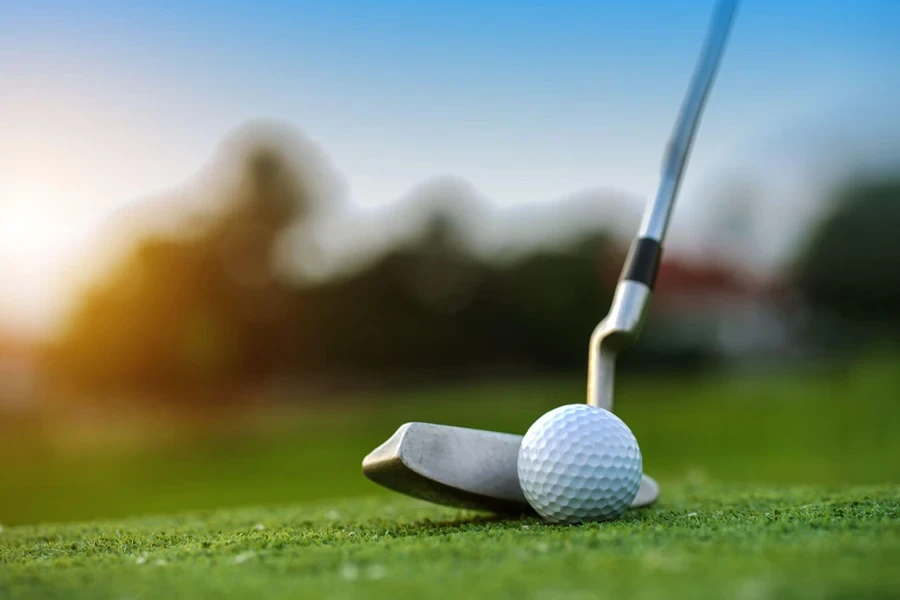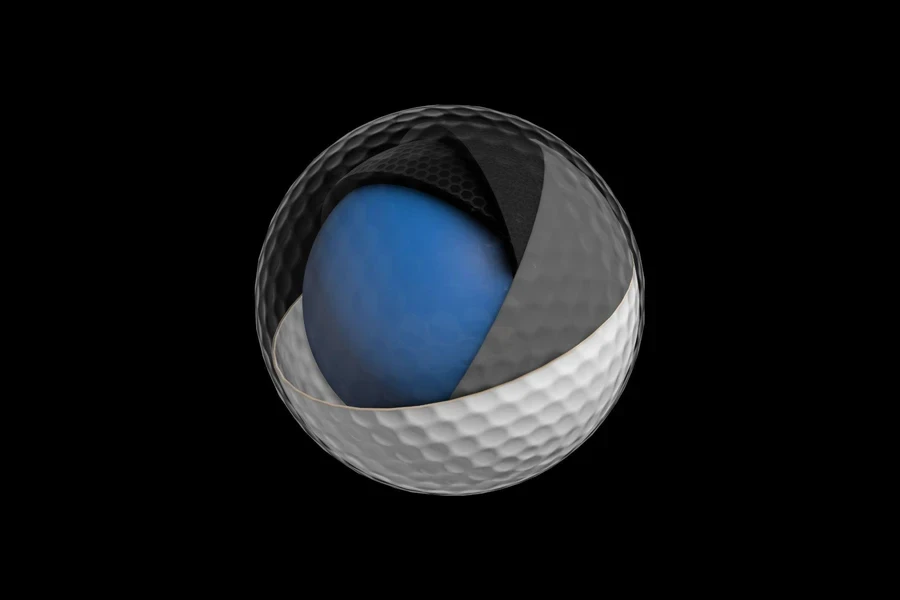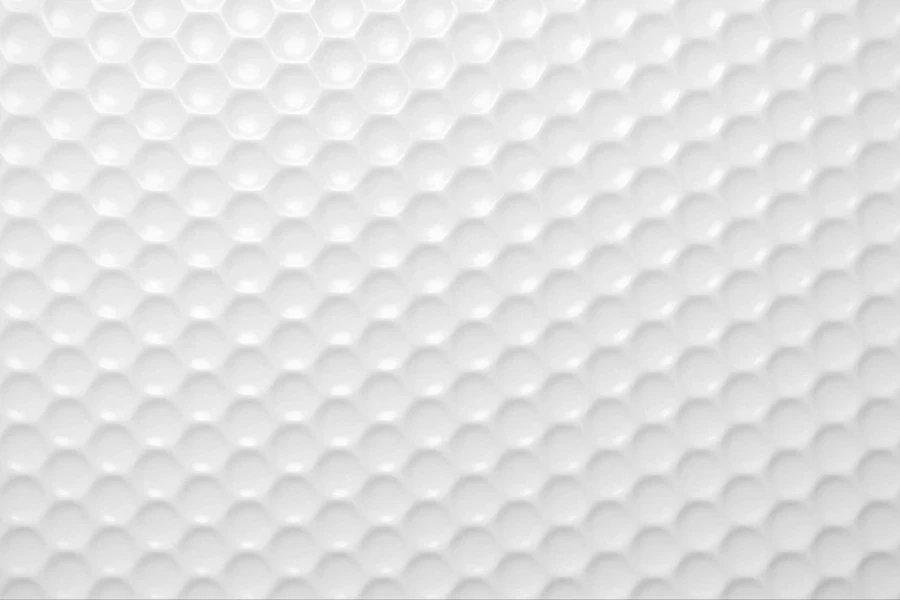Introduction
In 2024, the golf ball market is experiencing significant evolution, driven by technological advancements and design innovations. This year, golfers have a plethora of choices, with golf balls that not only meet but exceed the highest standards of performance, durability, and innovation. As we explore this dynamic market, we uncover the latest trends, standout models, and crucial selection criteria, setting the stage for an unparalleled golfing experience.
Golf Ball Market Overview
The global golf ball market size reached USD 1,074.41 million in 2023 and is projected to reach USD 1,774.41 million by 2031, growing at a compound annual growth rate (CAGR) of 5.29%. The demand for golf balls is driven by various factors, including the growing participation in amateur leagues, high-profile endorsements and sponsorships, and technological advancements. Regionally, North America continues to lead in the golf balls market, thanks to its deep-rooted golf culture and presence of key players like Titleist and Callaway. The market dynamics are also influenced by the global popularity of golf, technological innovations in ball design (such as improved aerodynamics and durability), and the rise of e-commerce platforms that have expanded consumer access to a wide variety of golf balls.

Key Considerations When Selecting Golf Balls
Material Quality
The material of a golf ball significantly influences its durability and in-game performance. The best golf balls are crafted from quality materials, ensuring lightness, sturdiness, and good playability. These materials impact the ball’s accuracy, weight, and overall performance, crucial for a player’s game. Golf balls made from synthetic materials like Surlyn are favored for their water resistance and durability. These materials are resilient, making them suitable for various playing conditions, whether it’s on wet, grassy fields or dry, artificial turf. Modern golf balls have evolved significantly from their early counterparts, which were made from hardwoods or leather stuffed with feathers. They are often multi-layered, combining different materials like resin, polyurethane, and rubber to offer a balance of distance, feel, and control.
Ball Construction
Modern golf balls often feature multi-layer construction, aimed at creating a smoother surface, which aids in better aerodynamics and more controlled flight patterns. The method of construction plays a crucial role in the ball’s durability and performance. Premium golf balls often use a multi-layer construction for a more responsive touch and better water resistance. This multi-layered design typically includes a core, one or more intermediate layers, and a cover. The core is usually made of a synthetic rubber compound, contributing to the ball’s compression and energy transfer. Intermediate layers, often made of materials like ionomer resins, add to the ball’s overall feel and control. The outer cover, traditionally made from balata and now more commonly from Surlyn or urethane, impacts the ball’s durability and spin characteristics.
The construction of a golf ball is a critical factor in its performance, with each layer designed to contribute to the overall behavior of the ball in flight. The core determines the compression and the potential distance, while the intermediate layers modulate the feel and control. The cover’s material and design, including the dimple pattern, influence the aerodynamics, controlling the flight path, spin, and stability of the ball. This sophisticated construction makes modern golf balls highly engineered sports equipment, tailored to various playing styles and conditions.

Compression Rate
Golf ball compression, indicating how much a ball deforms under pressure, varies due to the lack of a universal standard, leading to differences across brands. Typically, the entire ball’s compression is measured, though marketing sometimes focuses only on core compression.
The feel of a golf ball is greatly influenced by its compression; higher compression balls are generally firmer, while lower ones are softer. This feel also depends on the cover material, with urethane-covered balls feeling softer than ionomer ones, regardless of similar compression levels. It’s worth noting that manufacturers’ descriptions of feel might not always match the actual compression. In terms of speed, softer, lower compression balls are usually slower off the driver, impacting distance for golfers with faster swings. For those with slower swings, this speed difference is less pronounced. With iron shots, lower compression balls can offer longer distances due to the influence of the ball’s outer layers.
Spin varies with compression too. Soft, low compression balls typically spin less than firmer ones because spin arises from a soft layer over a hard one, and softer balls have softer layers overall. This can lead to straighter driver shots but challenges in holding greens with iron shots. Ball flight is mostly determined by dimple patterns, not compression. Low compression balls often have high trajectory patterns to balance out lower spin, aiming for a higher flight and softer landings.

Contrary to some beliefs, softer, low compression balls don’t necessarily spin more around the green. The highest spinning balls have a soft urethane cover over a firmer mantle. Soft marketed balls with firmer covers over soft cores spin less. Choosing the right compression involves more than just swing speed. Golfers can compress the ball’s core even at low speeds like 60 MPH, but faster swingers risk over-compressing softer balls. Ball fitting should prioritize trajectory and spin over compression. Many golfers, including those with moderate speeds, often benefit from balls with higher flight and spin, challenging common beliefs about compression suitability.
Dimples
The dimples on a golf ball are designed to reduce air drag and increase lift, allowing the ball to stay in the air for a longer time and travel further distances. The number, size, and pattern of dimples can affect the ball’s flight characteristics and overall performance. Modern golf balls typically have 300 to 500 dimples, although there have been balls with over 1000 dimples. The arrangement of these dimples is crucial; they must be symmetrical to ensure consistent flight behavior. Different dimple patterns, such as circular or hexagonal, are used to optimize aerodynamics, affecting the ball’s resistance to spinning and its flight path. For instance, some designs aim to reduce side spin for straighter flights. The dimple design is a key factor in a golf ball’s aerodynamics, influencing its behavior in various playing conditions and making it an essential aspect of golf ball engineering.

Top Picks for 2024
Wilson Staff Model – Best for Ball Speed
The Wilson Staff Model golf ball is crafted with features tailored for professional and skilled amateur golfers. Its 4-piece tour-level construction is engineered for peak performance, meeting the rigorous requirements of top-tier players. The ball’s cast urethane cover enhances control and spin, crucial for precision play, while also boosting its longevity and overall performance. An innovative aspect of the Wilson Staff Model is its unique painting process, which guarantees exceptional uniformity for a dependable and predictable flight path, addressing potential issues caused by inconsistent paint application. Additionally, the Staff Model R variant introduces a novel approach with its raw, unpainted cover, designed to offer unmatched accuracy and consistency. This groundbreaking design minimizes aerodynamic imperfections, promoting a stable and precise ball flight towards the intended target.
Callaway Chrome Soft – Best for Soft Feel
The Callaway Chrome Soft golf ball is designed for a wide range of golfers, offering a soft feel particularly beneficial in short games and enabling a high launch with low spin from the tee. Its distinctive Elastic SoftFast Core merges speed with control, catering to various skill levels. The core’s innovative design, featuring a significantly larger inner core and a thinner, graphene-infused outer layer, enhances both distance and control by increasing wedge spin and ball speed. Callaway’s Precision Technology further refines the golf ball through advanced core materials, improving performance and consistency. The Chrome Soft stands out for its combination of a soft feel and durability, providing excellent short game control and putt feedback, which are essential for accuracy. Additionally, Callaway’s visual aids like Tru Track and Triple Track lines on the golf balls aid in shot and putt alignment, offering a practical edge. Suited for golfers with different swing speeds, the Chrome Soft is an all-rounder, improving various aspects of the game from distance to feel.
TaylorMade Tour Response – Best for Beginners
The TaylorMade Tour Response golf ball offers tour-quality performance at a more affordable price, featuring a 100% cast urethane cover for enhanced greenside control. This ball is designed with a low 70-compression and a Hi-Spring Core, aiming to maximize ball speed while providing a soft feel. It incorporates the Tour Flight Dimple Pattern, a technology proven on the TP5/TP5x, to improve aerodynamics and maximize carry distance. The 3-piece construction, including a new Speedmantle™ with HFM, is engineered for fast ball speeds and efficient energy transfer.
The soft urethane cover of the Tour Response enhances the grip of wedge grooves on the ball, improving control on green-side shots and ensuring durability. A distinctive feature of this ball is the 360º stripe around it, which aids in visualizing putt paths and improving aim. Additionally, TaylorMade’s research indicates that the ball’s urethane cover is not only 12% softer but also more durable. While some reviews suggest a slight reduction in distance and greenside spin rates compared to other models, the Tour Response is generally regarded as a well-rounded golf ball that effectively balances distance, feel, and spin.

Conclusion
The golf ball industry in 2024 has reached new heights in innovation and quality. The advancements in materials, construction, and design have culminated in a range of golf balls that cater to every level of play, from amateur leagues to professional tournaments. These developments not only enhance the performance and durability of the balls but also ensure that players at all levels have access to equipment that meets their specific needs and playing conditions. The evolution of golf balls reflects a commitment to excellence and a deep understanding of the sport’s demands, promising an enriched and more dynamic golfing experience for players around the globe.





 বাংলা
বাংলা Nederlands
Nederlands English
English Français
Français Deutsch
Deutsch हिन्दी
हिन्दी Bahasa Indonesia
Bahasa Indonesia Italiano
Italiano 日本語
日本語 한국어
한국어 Bahasa Melayu
Bahasa Melayu മലയാളം
മലയാളം پښتو
پښتو فارسی
فارسی Polski
Polski Português
Português Русский
Русский Español
Español Kiswahili
Kiswahili ไทย
ไทย Türkçe
Türkçe اردو
اردو Tiếng Việt
Tiếng Việt isiXhosa
isiXhosa Zulu
Zulu